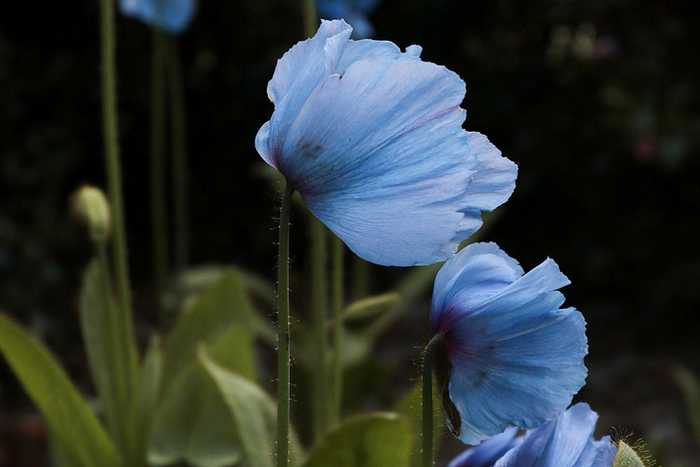The Stone Path Project

Towards the end of May, a snaking pathway up through the rhododendrons on The Mount is lined with the boldest and most luminous of blues. The turn of the meconopsis poppies, a slice of the Himalayan wilds recreated on a hillside in Somerset. They seem to thrive under the skirts of the magnolias and azaleas, and keen to increase their footprint, Joshua Sparkes (head gardener at Forde Abbey) has sketched out a more expansive design to continue the steps of the stone pathway curling up and through and adding to the Asian woodland feel with:
Chelonopsos , Kirengeshoma, Selenium Wallichianum, Actaea simplex, Aruncus, Nepeta, Deschampsia, Calamagrostis and Astillboies tabular.
In the centre of the stone path there’s a small clearing, where glancing rays of sunshine find their way through the branches of overhanging trees – soon to be home for a grassland grove, inspired by a farm landscape of sporobolus and pennisetums, Josh came upon during his travels around Kyoto.
As well as the design, careful thought has also been given to the health of the soil; how to nourish it and protect the open ground from the elements over the Summer, and the inevitable weeding that would result from the introduction of a new planting scheme before it has had chance to become established. Mindful of a dry spell ahead, the plants will stay in the nursery until September, with some much needed time to feed the soil with homemade tinctures and brews that will hopefully feed the microbiology down below.
The inclination might normally be to mulch the ground to create a rich soil, but the North American prairie grasses used in the design much prefer poor, free draining soil. To accommodate them, the soil has been lightly rotivitated and covered with a straw mulch, which will act like a compost, helping suppress the weeds and retain moisture. Some leftover pumpkins and squashes (from Olly Hone’s veg beds in the kitchen garden) have been added in amongst the straw. A cash crop of pumpkins and squashes and gourds will follow, but having them in the soil is actively creating photosynthesis that in turn will be feeding the microbe layer in the soil, locking in carbon and putting sugar down into the roots.
Homemade compost teas, fermented plant juices and Oriental herbal nutrients will be added to the soil, along with biochar, an ‘activated’ charcoal that not only acts like a fertiliser but sequesters carbon in the soil over a lifetime.
For now it’s poppies, but the hope for next year is more of the Himalayas. It’s an ongoing project, we’ll revisit in July and again in September.
In the meanwhile, you can follow us for daily gardening updates on instagram.
Posted on May 30th 2019




